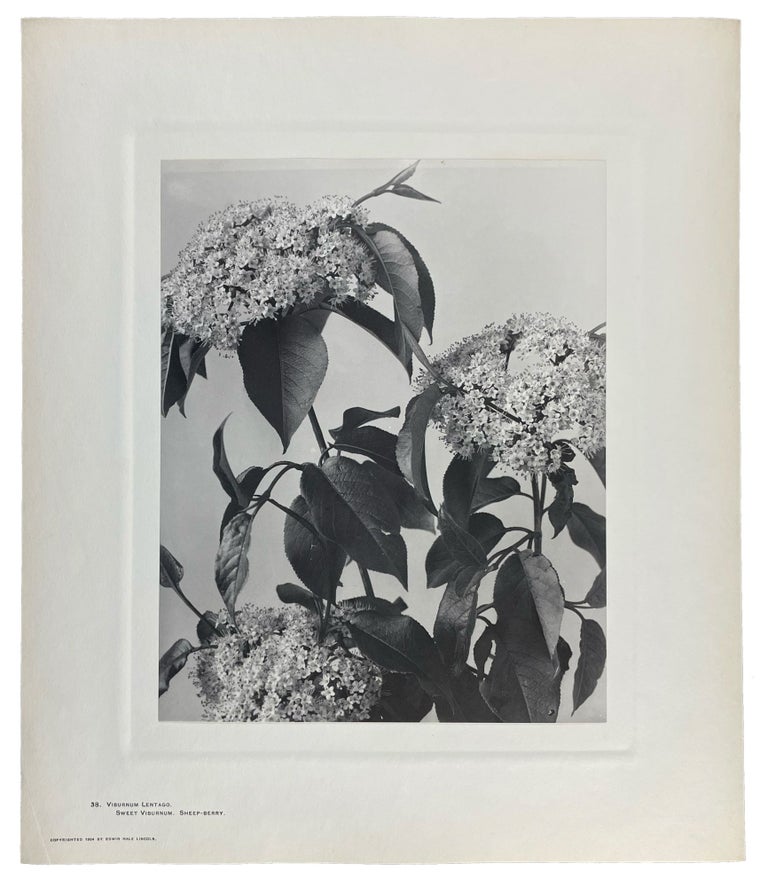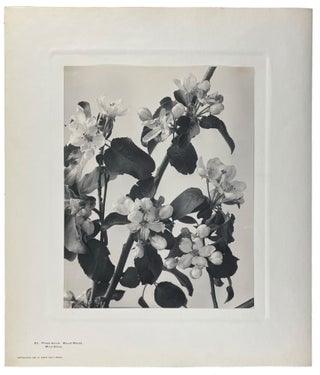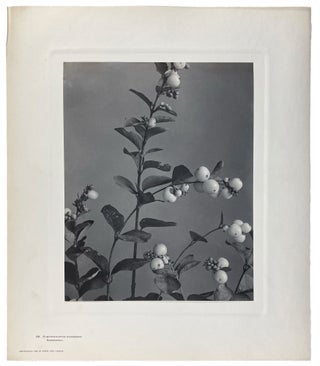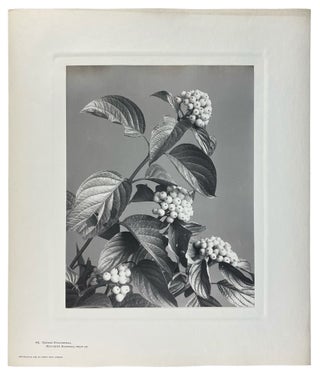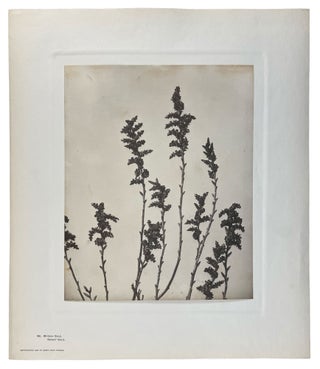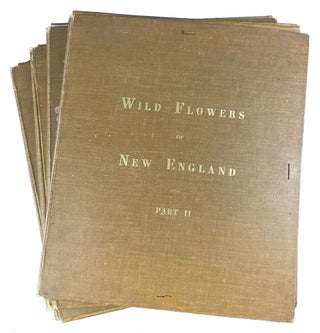LINCOLN, Edwin Hale (1848-1938)
Wild Flowers of New England Photographed from Nature and Published: Parts II, III, IV, and VIII
Pittsfield, MA: 1904. (15 x 13 inches). Four portfolios, each portfolio with title, part title and two leaves of index, comprising 85 photographs, tipped onto heavy rag paper mounts with letterpress captions giving the subject's Latin binomial and common name in English. Within 4 cloth portfolios lettered in gilt.
85 photographs from Edwin Hale Lincoln's magnificent record of the wild flowers of New England: a masterpiece of American photography and an essential component of early twentieth-century American artistic sensibility.
Edwin Hale Lincoln (1848 - 1938) was born in Westminster, Massachusetts. Following service in the Civil War as a drummer boy and work as a page in the Massachusetts House of Representatives, he entered the photographic profession in Brockton in 1876. His early work included photographing yachts under full sail and documenting large estates. He visited Lenox initially in 1883 and moved permanently to the Berkshire area ten years later. His move coincided with the height of the development of Berkshire's "Summer Cottages," and Lincoln photographed many of these grand structures in the following years. Also at the end of the 19th-century, Lincoln began what was to become an extensive study of New England wild flowers, all photographed with a large-format view camera. The complete work, self-published between 1910 and 1914 in sixteen parts, forming eight volumes consisting of 400 platinum prints. This remarkable group of photographs from Lincoln's superb modernist photobook produced between 1893 and 1914 reveals Lincoln's direct and straightforward vision, his skill as a large format photographer, and his craftsmanship in producing notoriously difficult platinum prints. By combining the philosophical outlook of the Transcendentalists with a cool aesthetic modernism, the photographer's clear and precise approach to image-making stands out from the soft-focus styles of his Photo-Secessionist contemporaries. A proto-conservationist, Lincoln was painstaking in his attempts to photograph each specimen without further endangering the species: with this in mind he would carefully dig up the selected plant, wrap the roots in moss, and return to his studio. Here he replanted his finds, allowing them to continue to grow until they reached their peak. He then took the required photograph using only the natural light from a window in his studio, taking only a single exposure of each plant. The large negative was quickly developed and printed by hand on platinum paper. After the exposure was made, the plant was returned unharmed to the spot in the woods where he had found it. Lincoln's care and attention to the individual plants seems to have suffused the resulting images with vivacity, while his use of the platinum process, along with close-up shots against flat backgrounds, resulted in tonally complex images with remarkable depth. "With slow looking, each [print] becomes a marvel of order and ornament. Nature itself emerges as an artist of infinite inventiveness...Like Thoreau, [Lincoln] had a reverence for nature that was as uncompromising as his coolly objective vision" (Johnson). Lincoln developed strong connections with the American Arts & Crafts movement and his work appeared in several issues of Gustave Stickley's The Craftsman, the movement's preeminent publication. Lincoln's photographs of New England's wild flowers clearly portrayed in fine detail against plain backgrounds and handsomely printed with a strong range of tones can be viewed as elegant precursors to the "straight" and "pure" modernist photographs produced in the later 1920s and 1930s by Imogen Cunningham, Edward Weston, Ansel Adams, and other members of the loosely associated Group f.64. Part II: Honeysuckle, Dogwood, and Saxifrage Families. Part III: Rose Family Part IV: Rose and Heath Families. Part VIII: Mint and Figwort Families.
William B. Becker, "Permanent Authentic Records: The Arts & Crafts Photographs of Edwin Hale Lincoln," in History of Photography: an International Quarterly, vol. 13, no. 1, January 1989; Keith Davis, An American Century of Photography: From Dry-Plate to Digital, second edition, (Kansas City, 1999), pp. 57-58, pl. 49; William Ewing, Flora Photographica (London, 1991), pl. 73; Lisa Bush, Hankin'No Record So True': The Wildflower Photographs of Edwin Hale Lincoln, 1848-1938, September 19-October 26, 20O2.(Richard York Gallery Exhibition Catalogue); A Persistance of Vision: photographs by Edwin Hale Lincoln. (Lenox, Ma., 1981). (Lenox Library Association / Berkshire Museum Exhibition Catalogue); OCLC 15680365; RLIN NYPG82-B1373; William Robinson, A Certain Slant of Light: The First Hundred Years of New England Photography (Boston, 1980), pp. 170-72, p. 228; Julia Van Haaften, From Talbot to Stieglitz: Masterpieces of Early Photography from the New York Public Library (New York, 1982), p. 17, pls. 66 and 67. Ken Johnson, "Edwin Hale Lincoln: 'No Record so True'" in The New York Times, 18 October 2002.
Item #40844
Price: $17,500.00

